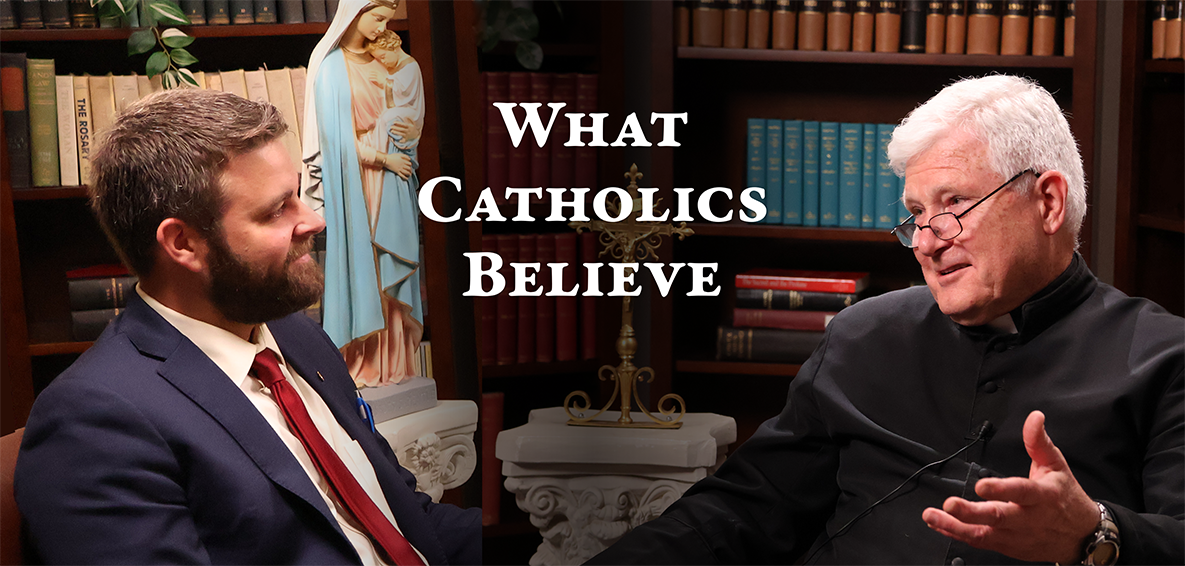Holy Saturday
In the primitive Church Holy Saturday was known as Great, or Grand, Saturday, Holy Saturday, the Angelic Night, the Vigil of Easter, etc. It is no longer, like Maundy Thursday, a day of joy, but one of joy and sadness intermingled; it is the close of the season of Lent and penance, and the beginning of paschal time, which is one of rejoicing.
BLESSING OF THE NEW FIRE
The first ceremony consists in the blessing of the new fire, which is to furnish light for the whole Service. It is not difficult to understand the meaning of this ceremony, which is no longer observed by the Latin Church save on this day. Our Lord said of Himself: “I am the light of the world.” Light, then, is an image of the Son of God.
After the new fire has been blessed outside the church a light is taken from it by an acolyte. The procession then moves up the church, the deacon in a white dalmatic carrying the triple candle. Three times the procession stops, the deacon lights one of the candles from the taper and sings, "Lumen Christi". The choir answers, "Deo gratias", to the same tone. Each time it is sung at a higher pitch. As it is sung, all genuflect. Arrived at the altar, the deacon begins the blessing of the Paschal Candle
PASCHAL CANDLE
The Church has provided a torch, which is to spread its light upon us during the whole of this long vigil. It is of an unusual size. It stands alone, and is of a pillar-like form. It is the Symbol of Christ. Before being lighted, its scriptural type is the pillar of a cloud, which hid the Israelites when they went out from Egypt; under this form, it is the figure of our Lord, when lying lifeless in the tomb. When lighted, we must see in it both the pillar of fire which guided the people of God, and the glory of our Jesus risen from His grave.
The blessing is performed by the deacon, wearing a white dalmatic. A long Eucharistic prayer, the "Præconium paschali" or "Exultet", is chanted by him, and in the course of this chanting the candle is first ornamented with five grains of incense and then lighted with the newly blessed fire. At a later stage in the service, during the blessing of the font, the same candle is plunged three times into the water with the words: Descendat in hanc plenitudinem fontis virtus Spiritus Sancti (May the power of the Holy Spirit come down into the fulness of this fountain). From Holy Saturday until Ascension Day the paschal candle is left with its candlestick in the sanctuary, standing upon the Gospel side of the altar, and it is lighted during high Mass and solemn Vespers on Sundays. It is extinguished after the Gospel on Ascension Day and is then removed.
THE READING OF THE PROPHECIES
These lessons are twelve in number. In order to fix the attention, and exite the devotion of her children to what she reads to them, the Church, after each lesson, recites a prayer, which sums up the doctrine expressed in the preceding prophecy. To some of them is added an appropriate canticle from the old Testament, and it is sung, by the whole assembly, to the well known melody of the Tract. Frequent genuflections, and the sombre-colored vestments, strongly contrast with the beautiful flame of the Paschal torch, which sheds its silent beams of light upon the faithful.
THE LITANY OF THE SAINTS
According to the present arrangement of the liturgy, it is sung but once during the whole of today's Service-that is, as soon as the clergy return to the choir after the blessing of the font-and each invocation is sung twice. The celebrant and ministers lie prostrate on the altar steps, praying for the neophytes who are this day added to the Church, throughout the world.
—
Text taken from The Catholic Encyclopedia 1917 & The Liturgical Year

